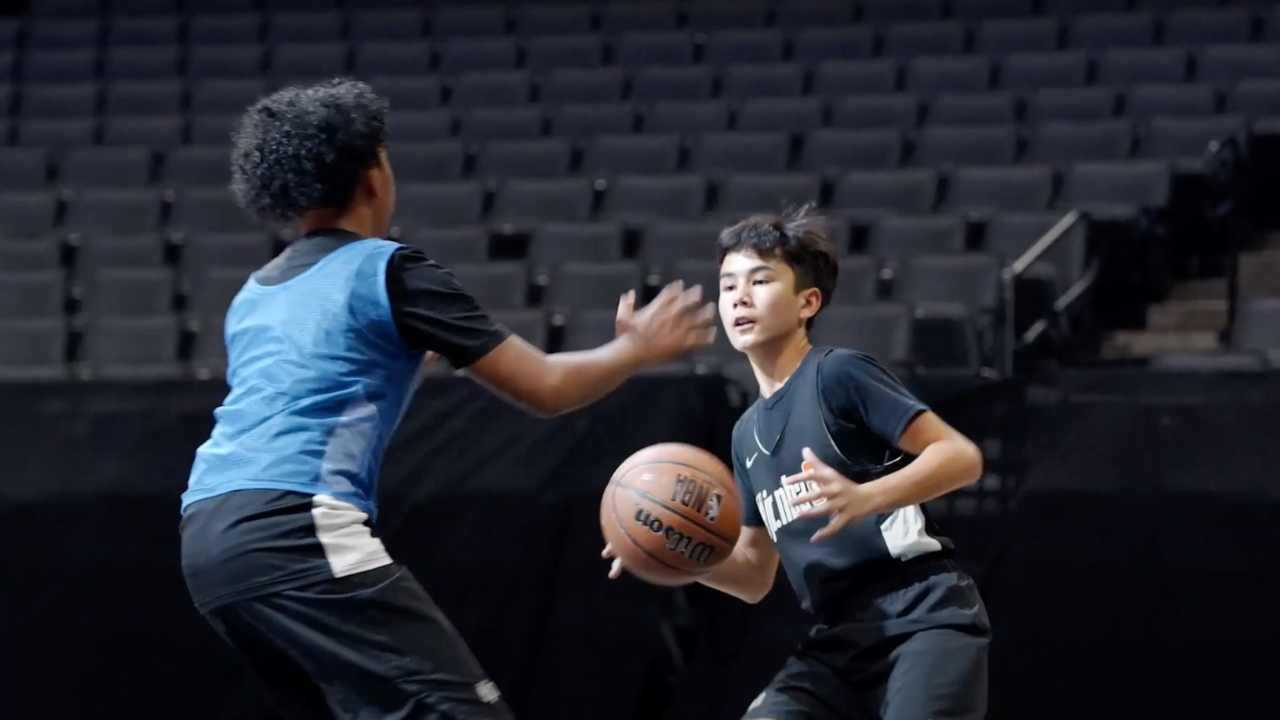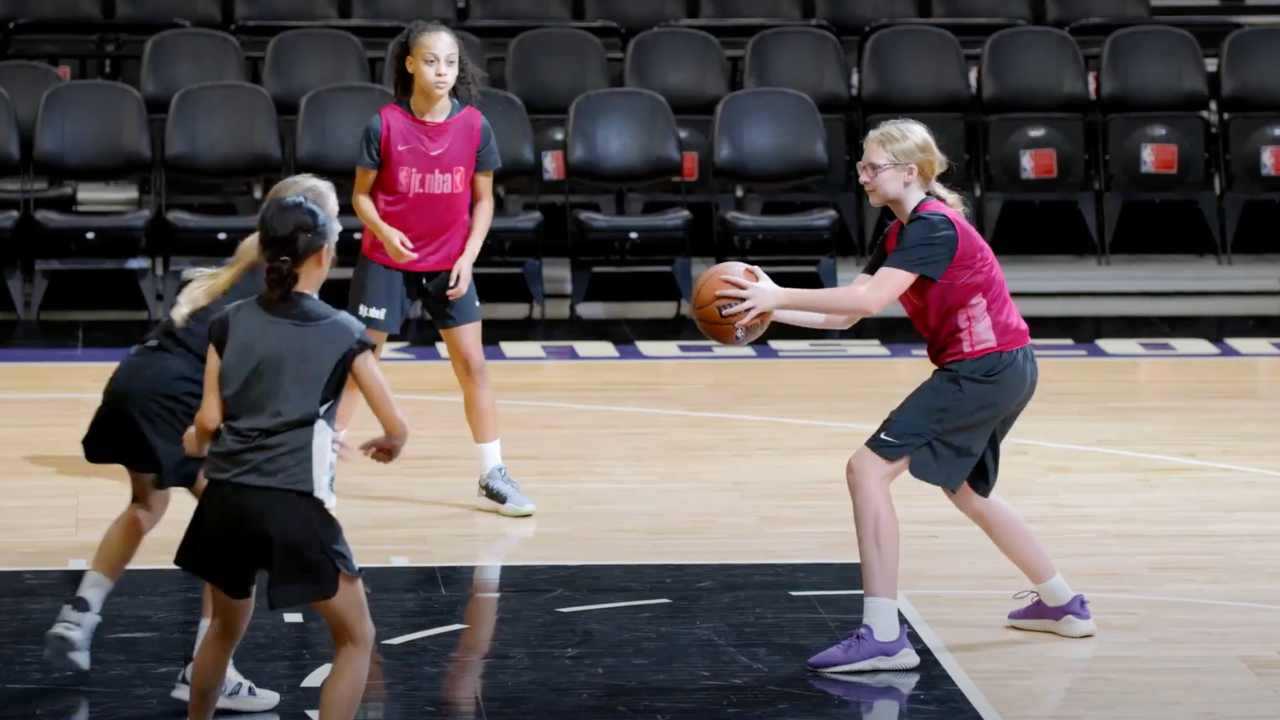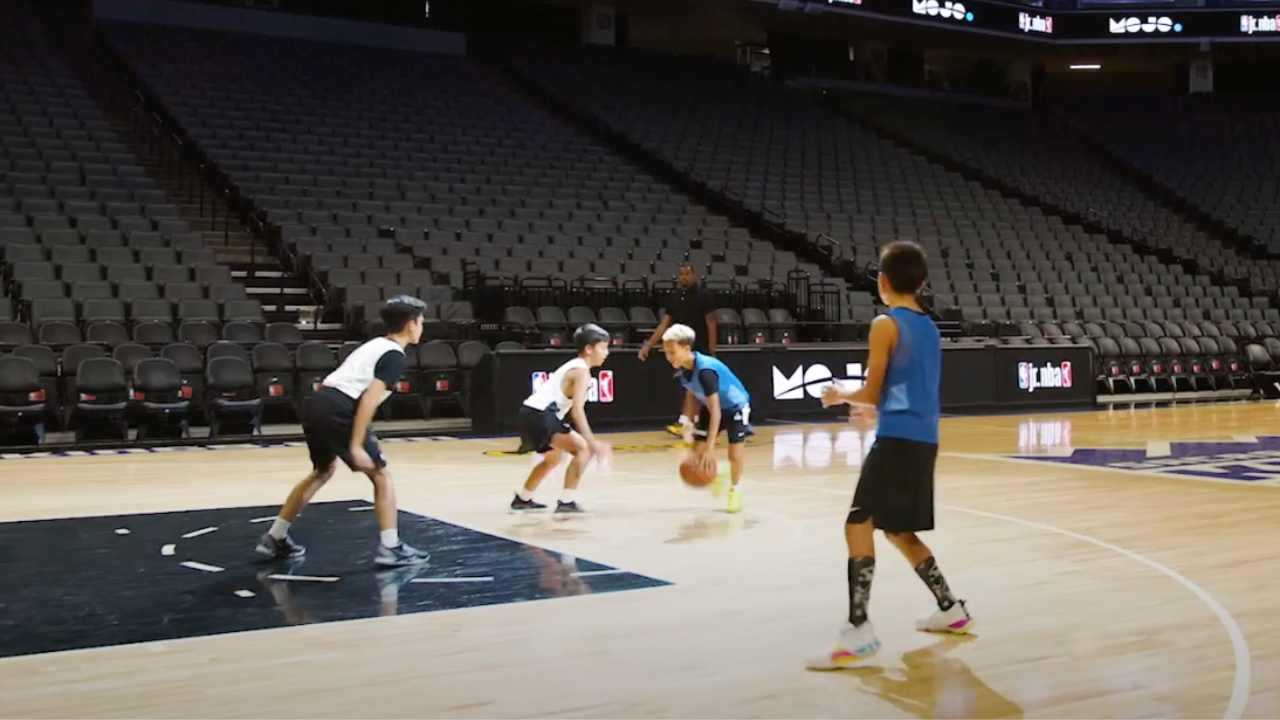The Rules of Youth Basketball — Explained
Youth basketball looks a little different depending on your player’s age
Sarah Lindenfeld Hall
| 5 min read

Twenty20/MOJO
My kids started playing basketball around age 5, and I will never forget watching them and their teammates figure out how to run and dribble at the same time as they lurched toward the basket and hoped for a swish.
Each youth basketball game is a journey, and, with the youngest kids especially, it’s going to include a lot of double dribbling and traveling and maybe a few own baskets, too. But what it might not include, particularly at those youngest ages, will surprise plenty of parents and coaches.
Zone defense, jump balls and even 3-pointers are among the basketball fundamentals that are verboten for younger players, according to standard youth basketball guidelines developed by the NBA and USA Basketball. And there’s a reason for that, says Evan Unrau, a former basketball coach and director of PeacePlayers International, a global nonprofit that brings kids together through sports. At the youngest ages, the focus should be on teaching kids the basics and helping them gain confidence.
“It’s introducing kids to the game of basketball and to sports in general and [ensuring] they are having a really positive first experience,” Unrau says.
Here’s what coaches and parents should know about the rules of youth basketball.
The very basics
Everything starts smaller in youth basketball – the balls, court size, basket height and distance of the free throw line – and grows with the players, typically reaching full-size by the time they reach age 12.
Take the height of the basket. For 7- and 8-year-olds, it stands at eight feet. From age 9 to 11, it’s nine feet. It rises to 10 feet, the NBA standard, at age 12. Similarly, the free throw line distance is set at 14 feet for ages 7 to 11 and moves to the NBA standard of 15 feet once kids hit age 12.
As the NBA and USA Basketball explains, these modifications help kids develop proper form and increase their chances at being successful. “That progression of learning and development is really important,” Unrau says. “It’s important to have that be standardized as kids continue to develop.”
Where are the jump balls?
Jump balls and 3-pointers might be hallmarks of the game, but standard youth basketball rules don’t allow them until age 12.
For kids ages 7 to 11, a coin flip often starts the game. The team who wins the coin flip throws the ball in at half court to begin play. “A coin flip takes the pressure out of the game, in a certain sense, which is creating that safe, positive environment for kids,” Unrau says.
Leaving out 3-pointers is another way to help young kids build confidence and skills. As the guidelines explain, not allowing them encourages players to shoot from a “developmentally appropriate range.”
“It’s creating opportunities for success at a young age and for kids to enjoy what they’re doing,” Unrau says. “As they continue to grow and gain strength and more autonomy over their bodies, they are going to have more ability to stretch out and increase their shooting range.”
Tactics are not (yet) on the table
Some coaches might be eager to dive into strategy when they start coaching a rec team, but not every tactic is on the table when coaching young kids.
For kids ages 7 to 11, only player-to-player defense — where coaches assign each player to defend a specific opponent — is allowed, according to the NBA and USA Basketball guidelines. Teams can start playing zone defense, where they defend an area of the court, at age 12.
Coaches also need to slow their roll when it comes to double teaming, the practice of blocking an opponent with two players, and stealing from a dribbler. Because size and skill levels can vary widely among kids, double teaming isn’t allowed for kids ages 7 to 11.
Young players, ages 7 and 8, also can’t steal from a dribbler. When they don’t have to constantly worry that an opponent will swipe the ball away from them as they dribble down the court, they’ll have more time to develop skills and confidence with the ball, the guidelines say. Once they hit age 9, however, swiping the ball away from a dribbler is fair game.
“It’s leveling that playing field while they are young,” says Unrau. “Then, as they continue to grow and develop, hopefully some of those concepts, both mentally and physically, become easier for them.”
More time to play
Kids also grow into general game play rules, too. For 7- and 8-year-olds, for example, there’s no backcourt timeline or shot clock. A 10-second backcourt timeline begins at age 9. The shot clock appears for kids ages 12 and up.
Of course, rules can vary from league to league. The NBA and USA Basketball guidelines are just that – guidelines. If your 8-year-old is ready for zone defense and jump balls, there’s probably a league for them.
“If you have a kid that is more serious than somebody else, there are leagues where they can go find that same mentality,” Unrau says. “And, likewise, if your kid is just out there having more fun and doesn’t want as much pressure, there’s places and opportunities for that as well.”




